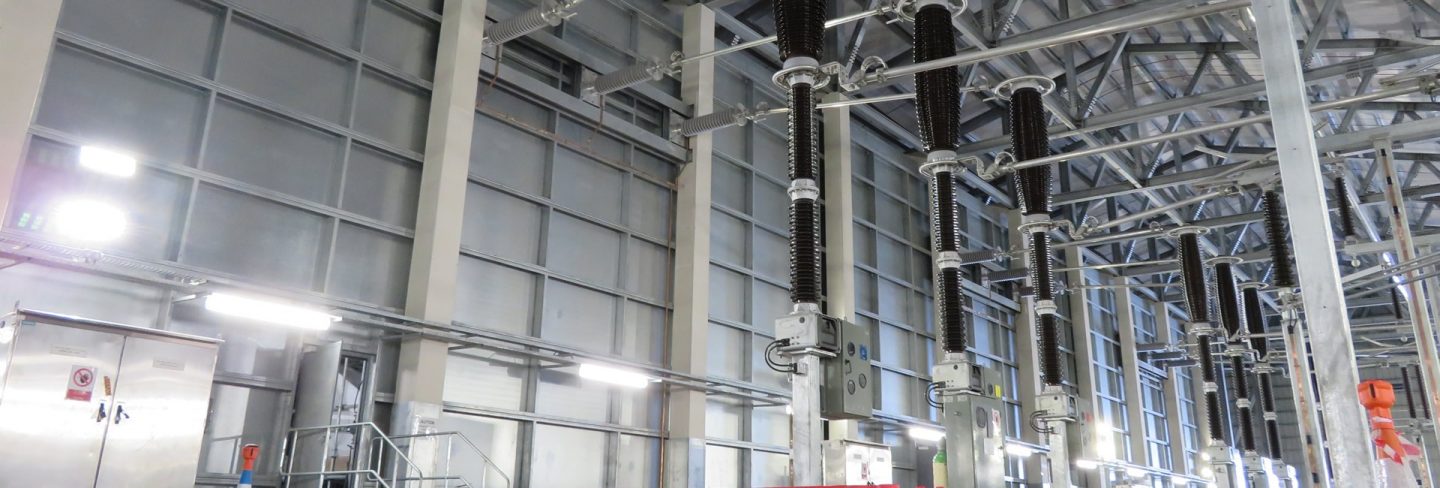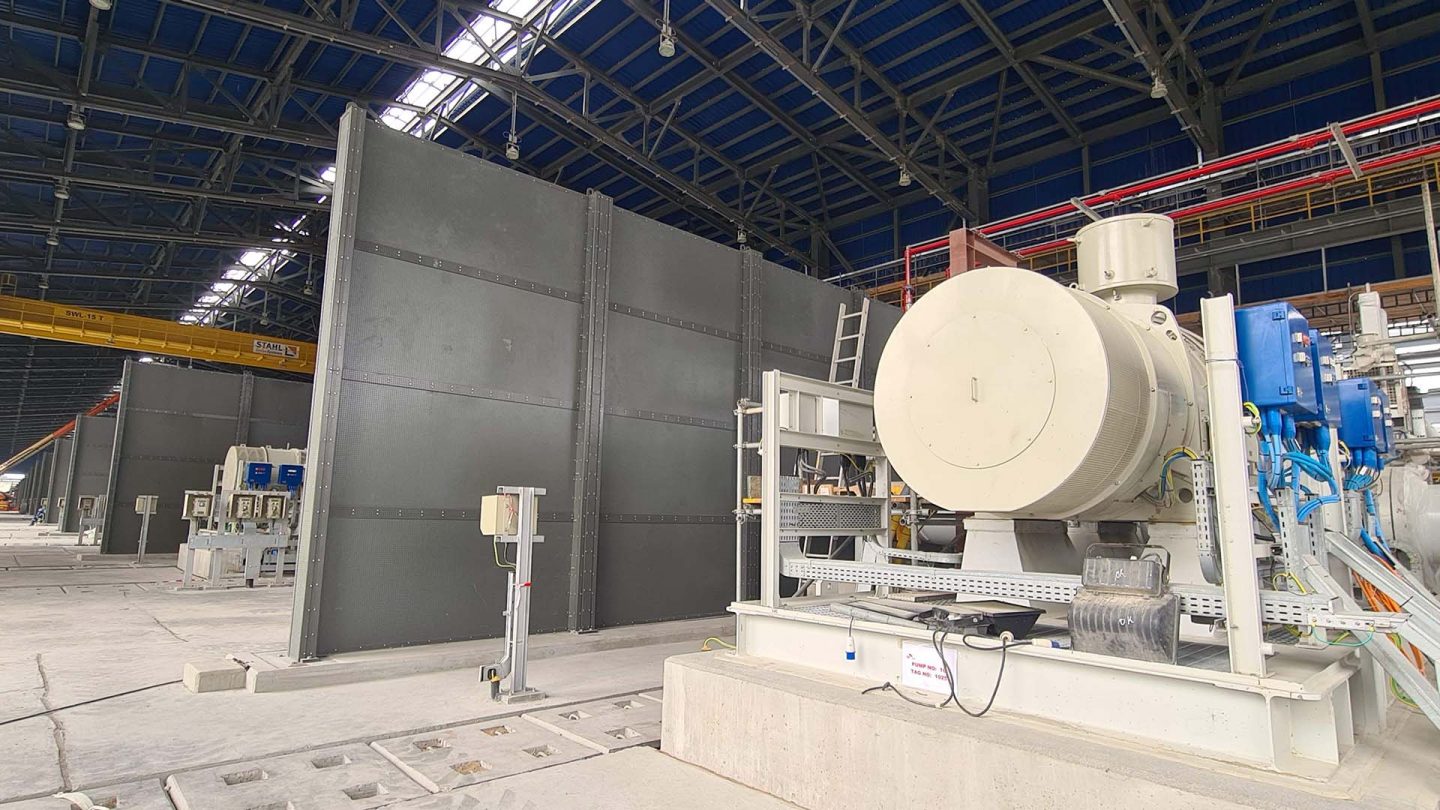For your information
You are being redirected to one of our divisional subsites which contains more detailed information on the required division. To navigate back to the main Invicta Group site, please click the link found in the footer at the bottom of the page.
- Durasteel
Discover the benefits of Durasteel
- Systems
Systems
- Expertise
Expertise
-
Applications
- Aircraft Hangar Fire Protection
- Battery Storage Facilities
- Building Fire Compartmentation
- Anti-Terrorist Blast Protection
- Cable Tunnel Fire Compartmentation
- Equipment Delivery Hatches
- Equipment Enclosures
- Heat Shields
- Power Station Fire Protection
- Metro and Rail Fire Protection
- High Voltage Cable Protection
- Substation Fire & Blast Protection
- Tunnel Fire Protection
- Oil & Gas Fire & Blast Protection
- Ventilation Systems
- Wind Farm Fire Protection
-
Applications
- Projects
- Insights
Insights
-
Articles
- Blast Protection System Design Considerations & Design Criteria
- How to Conduct a Fire Risk Assessment for Factories and Warehouses
- Minimising the Risk of Fire, Blasts & Explosions in the Middle East
- Integrity, Stability and Insulation in Passive Fire Protection
- Triangle of Fire & Active vs Passive Fire Protection
- Frequently Asked Questions
- A to Z of Terms
-
Articles
- Contact
Contact

UK +44 1843 220 256

US +1 305 328 9444

UAE +971 4 277 6225

Qatar +974 4441 4340

India +91 99 0355 9793

Malaysia +60 16 286 6225
- Start your project
Does the rise in electric vehicle fires pose a risk to buildings?
31st January 2025
Quick Quote
Contact Fraser Shearer Sarun Vysakham Ben Tan Azim Rizvi Anand Raghavan Our USA Office
To get a quotation or arrange a free site survey - Call Fraser Shearer Sarun Vysakham Ben Tan Azim Rizvi Anand Raghavan Our USA Office on
-
 UK
UK
-
 UAE
UAE
-
 Malaysia
Malaysia
-
 India
India
-
 Qatar
Qatar
-
 USA
USA
Current location:
Quick Quote
Contact Fraser Shearer Sarun Vysakham Ben Tan Azim Rizvi Anand Raghavan Our USA Office
-
 UK
UK
-
 UAE
UAE
-
 Malaysia
Malaysia
-
 India
India
-
 Qatar
Qatar
-
 USA
USA
Current location:
The rise of electric vehicles is less of a trend and more of an imperative. As countries around the world scramble to meet emissions targets, switching to electric vehicles is an effective way to reduce emissions and air pollution in cities. With other car manufacturers now having caught up with early leaders Tesla, a wide range of options is now available, including a growing used car market.
The transition hasn’t been a smooth one so far, however. As well as the expected barriers of car prices and infrastructure, a somewhat unexpected issue has emerged. Social media is full of videos of burning electric cars, supposedly caused by battery failures. But what is the truth behind these images—and what might the consequences be for car parks in and around buildings?
The surge in electric vehicles
The surge in electric vehicle (EV) ownership is sometimes overstated, but the tide is certainly turning. As charging infrastructure has improved and schemes such as ULEZ have been introduced, hybrids and fully-electric vehicles have grown in popularity. The number of EVs has increased fivefold over the past four years, and now represents 3.5% of all cars in the UK, amounting to 1,200,000 vehicles.
While the threat of climate change is an obvious driver, the technology behind EVs has also developed rapidly. Advancements in battery technology have significantly improved the range and performance of EVs, making them more practical for daily commuting and long-distance travel, helping to address the problem of ‘range anxiety’.
Governments around the world are also playing a crucial role in promoting EV adoption. Tax incentives, subsidies, and infrastructure investments have created a more favourable environment for EV ownership. That this growth has happened through an energy crisis—where home charging would have been much more expensive—speaks to the genuine potential of EVs.
EV fires: fair or foul?
It’s not hard to see why videos of EV fires continually go viral. Footage of the fires, often taken from Ring doorbells or CCTV in car parks, shows fires suddenly sparking up out of nowhere. The fires quickly consume the cars, which burn intensely for a long period of time. The result is a dramatic piece of footage, one which seems to present EVs as a dangerous and underdeveloped technology being pushed to market.
It is true that EV fires can be extremely difficult to put out. If a fire reaches the car’s battery, a process called thermal runaway can occur, where the chemicals inside react in a way that generates more heat, and sustains the fire. Electrical faults can certainly occur in EVs, and not all cars are built to the same standards. Tesla’s quality control issues are well documented, while similar stories have emerged as China has ramped up its EV production.
Are EVs inherently dangerous, though? Not really. The batteries in electric cars are as well protected as fuel tanks in petrol or diesel vehicles, which pose an even greater fire risk. In fact, the data we have suggests that gas-powered cars are significantly more fire-prone than EVs, with 1,510 fires per 100,000 vehicles sold compared to just 25 per 100,000 electric cars sold. And while the fires are dangerous, thermal runaway can potentially be prevented by cooling the battery down.
The risk of fires in car parks
Despite this, the risk of vehicle fires is worth reflecting on. As EV ownership grows, more fires due to manufacturing defects or malfunctions are likely. While a petrol or diesel car fire may occur as a result of damage, EV fires may also be more likely to happen when parked. A parking garage full of EVs could feasibly cause a chain reaction, leading to a long and intense fire. Again, while this is not necessarily worse than fuel-based fires, it is different, and requires different considerations.
Parking garages have already been shown to be susceptible to fire. A multi-storey car park at Luton airport caught fire last year, destroying 1,400 vehicles and requiring 100 firefighters to put it out. To emphasise the point on electric cars, this is thought to have been an accidental fire resulting from a failure in a moving diesel vehicle. A 2018 fire at King’s Dock in Liverpool was similarly destructive, gutting a multi-storey car park and destroying 1,150 vehicles.
The unique challenges of protecting car parks from fire are well understood, but perhaps not as widely appreciated as they should be. These spaces often combine an enclosed structure with ready access to air, trapping smoke and heat while also fueling the fire. There is a suggestion by some in the industry that the way car parks are designed simply hasn’t caught up with the reality of today’s vehicles.
Fire safety considerations in car parks
One of the issues is simply that cars are getting bigger. This is an issue that road infrastructure has also had to cope with, such as historic bridges not being built to support modern vehicles. In the context of car parks, bigger cars are being fitted into the same-sized spaces, meaning less space between them. This allows fire to jump between cars much more easily, and the radiant heat to damage sensitive components more quickly.
There are ways to mitigate this. Perhaps the most obvious is some form of active fire protection, such as a sprinkler system. Common sense might dictate that sprinklers would have a negative impact on what is an electrical fire, but evidence suggests that sprinklers actually have a net positive impact, and that the water used to douse vehicle fires rarely reaches the battery itself. The effect of sprinklers may not only give more time for emergency services to react, but also limit the effects of radiant heat, preventing thermal runaways.
Fire alarms and fire detection systems are also important. The semi open air design of many large parking garages presents additional challenges for fire detection, and manual fire alarm call points are also necessary at regular intervals. The height of many multi-storey car parks and open internal layouts both present added risk, both in terms of fire propagation and evacuation. While most have multiple points of access, including multiple stairwells, safe points of egress for people with mobility issues present a particular challenge.
Passive fire protection in car parks
The risk when a fire occurs in a multi-storey car park is of the fire spreading laterally and vertically. Despite the concrete and steel construction of many such car parks, the temperatures generated by vehicle fires and the possibility for explosions can still put them at risk of serious structural damage, and even collapse. An intense fire will eventually propagate between floors, and can also spread to parallel structures.
One of the ways to prevent this is segmentation. Walls or barriers placed between rows of parking could limit the propagation of fire between vehicles in different sections of the car park, and shield nearby vehicles from the radiant heat of an intense fire. A Durasteel barrier could protect vehicles from a lateral fire without using excessive space, something we’ve demonstrated through our recent work on Durasteel barriers between bus charging bays at Heathrow Airport. Effective fire doors are also important to protect stairwells, and prevent smoke and fire from travelling quickly between levels.
Passive fire protection can also be deployed to protect critical infrastructure and life safety systems within car parks. Under normal circumstances, the cabling and electronics in a car park can contribute to a fire, and allow it to spread along a wall or ceiling, bridging gaps between vehicles. Durasteel cable encasements can prevent this, as well as protecting crucial smoke extraction systems and ductwork.
Our work at the Sheik Zayed Grand Mosque encapsulates this perfectly. We designed and installed fire-rated supply and extraction ducts with fire-rated metal grills, as well as additional high-performance insulation boards, protecting not just from fire but also the heat of the smoke and gases. The ducts were hidden inside elegant fire-rated cladding featuring advertising boards, with ample space between different parking areas.
–
By combining passive and active fire protection measures, building owners and managers can create a comprehensive fire safety strategy for large parking garages. Passive fire protection systems such as Durasteel are one aspect of a broader fire safety strategy, catering to the growing propensity for and complexity of vehicle fires.
While electric vehicles will not necessarily mean more vehicle fires, they do present different fire safety challenges. At a time of widespread misinformation, it’s important to remain informed about these fire safety risks, and take proactive steps to mitigate them. By investing in high-quality fire protection solutions, you can ensure the safety of your building and its occupants—and hit the brakes on any vehicle fires.
Accreditations & Affiliations











SpecUp - System Specification Wizard
Answer the 5 short questions below to receive your recommended Durasteel system specifications. Hover over the ? icons for a brief explanation.
Question 1/5
Type of system required?
Question 2/5
Fire rating required?
Question 3/5
Fire integrity-only or integrity and insulation?
Question 4/5
Fire attack risk from one side or both sides of the system?
Question 5/5
Blast rating required in addition to fire rating?
Creating your results page
Thanks for completing the SpecUp, you’ll be redirected to your results shortly.
Click here if you aren't redirected after a few secondsStart your project
Tell us about your project. Please complete this form. One of our sales team will come back to you with more details. If you prefer, you can drop us an email.




Share/Like this page